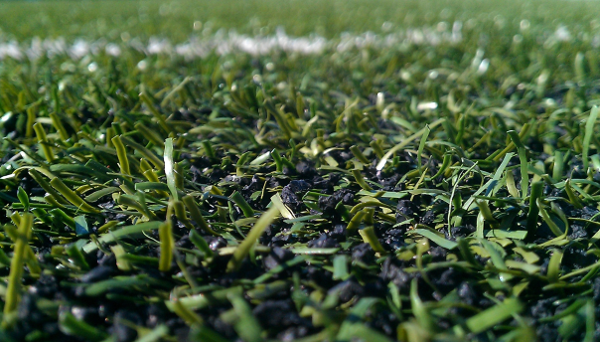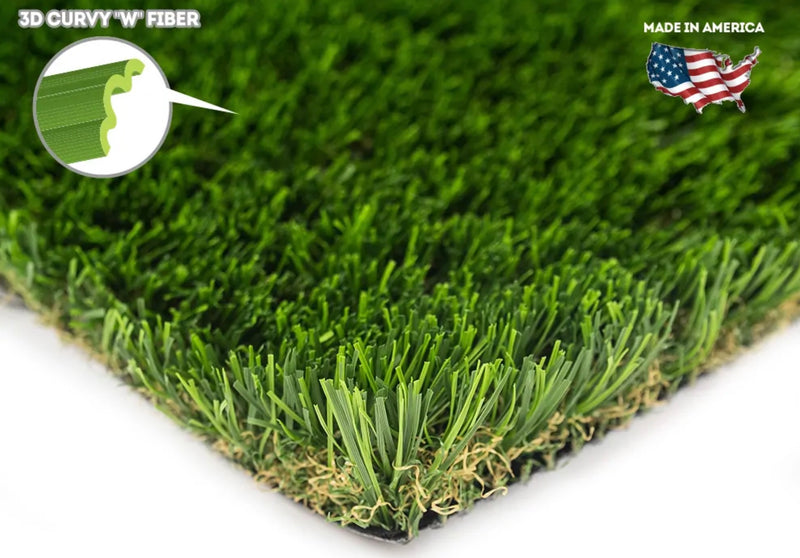Explore the Environmental Conveniences of Opting for Artificial Lawn Solutions
The adoption of man-made lawn services provides an engaging chance to address pressing environmental challenges. By dramatically lowering water usage and reducing the application of damaging chemicals, these alternatives not only advertise sustainable landscape design however additionally safeguard local ecosystems. The lower carbon impact associated with reduced maintenance activities contributes to a much more sustainable method to land monitoring. Nevertheless, the effects of these benefits prolong beyond simple conservation initiatives, questioning regarding their long-lasting influence on environment conservation and total environmental equilibrium. Exploring these measurements reveals an intricate interplay worth considering.
Water Preservation Perks
Among one of the most considerable benefits of synthetic grass is its capability to save water. Traditional grass lawns require substantial irrigation, especially in areas susceptible to dry spell or water limitations. In comparison, synthetic lawn does not require watering, substantially reducing the overall demand for water sources. This feature is specifically valuable in deserts where water deficiency is a pushing worry.
By eliminating the demand for routine watering, synthetic grass adds to sustainable landscape methods and helps minimize the ecological effect of too much water intake. The preservation of water extends to the decrease of drainage, which can lead to soil erosion and river contamination.
In addition, the installation of synthetic grass permits communities and homeowners to allocate water resources more successfully, concentrating on vital usages such as alcohol consumption water and agriculture. The shift towards synthetic grass not only promotes responsible water use but additionally aligns with wider ecological objectives aimed at maintaining natural deposits.
As communities increasingly prioritize sustainability, the water preservation advantages of fabricated grass provide a compelling situation for its fostering in domestic and commercial landscaping jobs.
Minimized Chemical Usage
The transition to synthetic grass significantly decreases the dependence on chemical treatments commonly utilized in natural grass upkeep. Standard turf administration typically involves the application of chemicals, plant foods, and herbicides to advertise development and control pests. These chemicals can position risks to human health and wellness, local wild animals, and the atmosphere, adding to dirt and water contamination.
In contrast, synthetic grass removes the requirement for these harmful compounds. By reducing the launch of artificial substances right into the ecological community, man-made lawn promotes much healthier dirt and water systems.
In addition, the absence of chemical overflow connected with synthetic grass installations helps shield local waterways from contamination, supporting marine life and preserving biodiversity. Turf installation phoenix az. As communities progressively focus on lasting techniques, selecting artificial lawn presents a practical option that aligns with environmental preservation goals. With this change, homeowner can delight in lush eco-friendly rooms without endangering eco-friendly health and wellness, leading the way for an extra lasting future
Reduced Carbon Footprint

In addition, the setup of synthetic grass can result in considerable water preservation. Natural yards need significant amounts of water for irrigation, which not just includes in the carbon impact connected with water extraction and therapy however additionally strains regional water sources. On the other hand, fabricated lawn needs very little upkeep, calling for no watering, therefore dramatically minimizing water usage and its associated power prices.
Furthermore, the longevity of fabricated grass contributes to its decreased carbon effect. With a lifespan of as much as index 15 years or more, the demand for constant substitutes is diminished, leading to less waste and reduced energy intake in manufacturing and getting rid of traditional yard options. In general, synthetic grass offers a sustainable choice for eco mindful landscape design.
Habitat Conservation
Environment conservation is a crucial consideration in the discussion over landscaping options, especially when contrasting man-made turf to natural lawn. Natural yard lawns commonly call for comprehensive upkeep, including making use of fertilizers, pesticides, and herbicides, which can negatively influence local ecological communities. These chemicals can leach right into the dirt and waterways, harming native flora and fauna and disrupting regional habitats.
Artificial grass eliminates the requirement for hazardous chemicals, thereby protecting nearby wildlife and maintaining the honesty of surrounding communities. The setup of artificial turf can lead to the conversion of previous lawn areas into more biodiverse landscapes, such as pollinator gardens or indigenous plant locations, address which can support neighborhood wild animals.
Ultimately, the shift to artificial turf not only saves water and lowers maintenance efforts but additionally promotes an extra harmonious connection in between human tasks and the native environment, promoting environment preservation while doing so.
Long-Term Sustainability
Lasting sustainability is a crucial aspect in evaluating the advantages of fabricated lawn over traditional turf lawns. One of the most significant benefits of synthetic turf is its durability; it can last up to 15-20 years with very little maintenance, whereas natural turf needs constant reseeding and replacement. This longevity minimizes the need for constant resources, such as water, plant foods, and chemicals, which are necessary for keeping a healthy yard yard.
Additionally, synthetic grass adds to a decrease in carbon discharges connected with yard care devices. Standard yards often call for gas-powered mowers, trimmers, and blowers, all of which contribute to air pollution. Arizona artificial turf. In contrast, synthetic lawn gets rid of the requirement for such tools, promoting a cleaner environment
Moreover, the manufacturing of synthetic grass significantly uses recycled products, enhancing its sustainability profile. As suppliers embrace green methods, the ecological impact of fabricated turf proceeds to reduce.

Final Thought
The adoption of synthetic grass services provides significant environmental advantages, including considerable water preservation, reduced reliance on unsafe chemicals, and a lower carbon footprint. Synthetic lawn help in maintaining natural habitats by minimizing land disturbance and advertising long-term sustainability with the usage you can try these out of durable materials. Jointly, these variables underscore the capacity of synthetic lawn to contribute positively to ecological wellness and offer a sensible alternative to traditional landscape design techniques in a significantly resource-conscious globe.
In comparison, man-made turf does not need watering, significantly lowering the overall demand for water resources. By decreasing the launch of artificial compounds into the ecosystem, fabricated turf advertises healthier soil and water systems.
Furthermore, the installation of fabricated turf can result in substantial water preservation. In comparison, artificial turf needs minimal upkeep, requiring no watering, therefore substantially minimizing water use and its connected energy prices.
